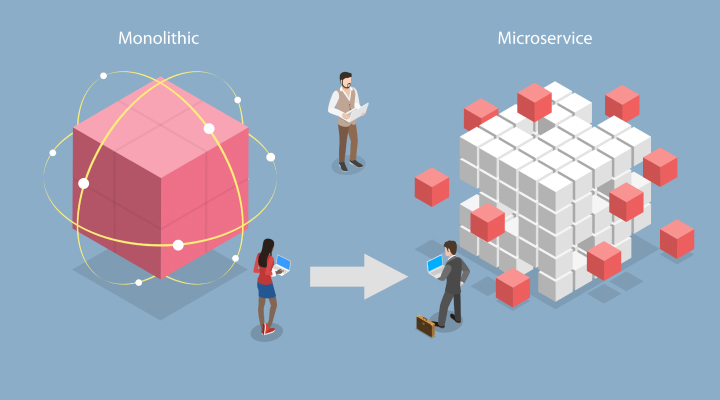The frontend is no longer a monolith. In the era of microservices-based architecture, digital transformation, and the growing role of personalization, the classic approach to the presentation layer is becoming ineffective. Micro frontends and the UX as a Service (UXaaS) concept are a response to the new needs of business and development teams. But are we really witnessing the end of the traditional frontend?
What are micro frontends?
Micro frontends are an architectural approach in which the user interface of a large application is divided into smaller, independent modules - each managed by a separate team, developed independently, and potentially implemented separately. This is a natural evolution of the microservices model to the UI layer.
Key features:
- domain and technology independence of modules (e.g. one team can use React, another Vue),
- separate CI/CD pipelines,
- independent testing and deployment,
- better organizational scalability.
Why is a classic frontend monolith no longer enough?
In the case of large systems – e-commerce platforms, B2B portals or SaaS applications – a monolithic frontend is starting to feel heavy. Too much coupling between components, problems with assigning responsibility between teams, and difficulties with implementing changes in parallel are just some of the challenges.
In addition, the frontend is increasingly becoming an “aggregator” of data from various sources – product APIs, recommendation systems, analytics or machine learning layers. Micro frontends allow these sources to be dynamically combined into independent, easy-to-iterate views.
UXaaS – user experience as a separated service layer
UXaaS (UX as a Service) is an innovative approach that treats UX – not only as design – but as a service delivered in the form of modules, ready for integration in various contexts.UXaaS includes:
- ready-made UI/UX components (design system as a service),
- personalization of the presentation layer based on user data (e.g. through AI),
- support for A/B testing and dynamic UI rendering.
In practice, this can mean that the UX layer is managed centrally by a separate team – e.g. an external software house or platform UX team – and consumed by different digital products as an API or SDK component.
Benefits of the micro frontend + UXaaS approach
- Technological and organizational decoupling
Teams can work independently on specific parts of the UI, without blocking each other. - Faster time-to-market
Modules can be implemented separately, without having to publish the entire frontend application. - Flexibility for multi-product or multi-market companies
It is easier to manage UX in different languages, market versions or channels (e.g. mobile/web). - Performance and scalability
Better cache utilization, ability to serve only the necessary components from a CDN. - UX as core value
UX ceases to be a “frontend layer” and becomes a strategic service designed centrally, taking into account behavioral data and machine learning.
Main challenges
Architectural complexity:implementing micro frontends requires technological maturity (e.g. Module Federation, Webpack 5, single-spa).
Performance issues: more requests, more JS code - loading optimization necessary.
UX/UI consistency: need to implement global system design and consistency processes.
Is it for everyone?
Not every company needs to move to micro frontends or UXaaS - these approaches make sense in large-scale projects with multiple teams or high change dynamics. For smaller products, a frontend monolith is still the simplest and most effective solution.
Frontend Monolith vs Micro Frontends
Classic frontend (monolith)
[ Frontend App (React SPA) ]
└── [ UI: Home ]
└── [ UI: Product Page ]
└── [ UI: Account ]
└── [ UI: Cart ]
|
V
[ REST API ]
|
V
[ Microservices / DB ]
Disadvantages:
- One deployment for the entire application
- Difficult cooperation of multiple teams
- Strong technological connections
Micro Frontends + UXaaS:
[ Shell App / Container ]
├── <HomeApp /> ← React (Team A)
├── <ProductApp /> ← Vue (Team B)
├── <CartApp /> ← Angular (Team C)
├── <UXaaS Components /> ← Personalized UI & API
|
V
[ UXaaS API Layer ]
└── Personalization, layout, A/B tests
|
V
[ Microservices / Headless CMS / ML ]
Advantages:
- Independent development and implementation of modules
- Possibility of UX personalization at the API level
- Technological and team scalability
The modern frontend is no longer just the “aesthetic layer” of the application. It is becoming a complex, multidimensional architecture, often managed as an independent ecosystem. Micro frontends and UXaaS allow not only to scale development, but also to better respond to user needs – dynamically, personally and modularly. This is the end of the “frontend as we know it” – and the beginning of its new role in digital business.

